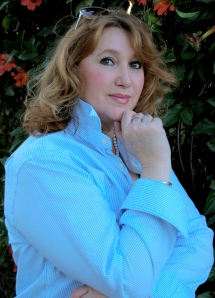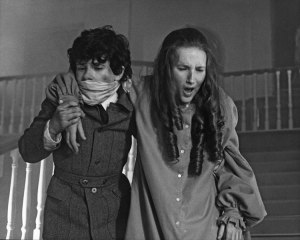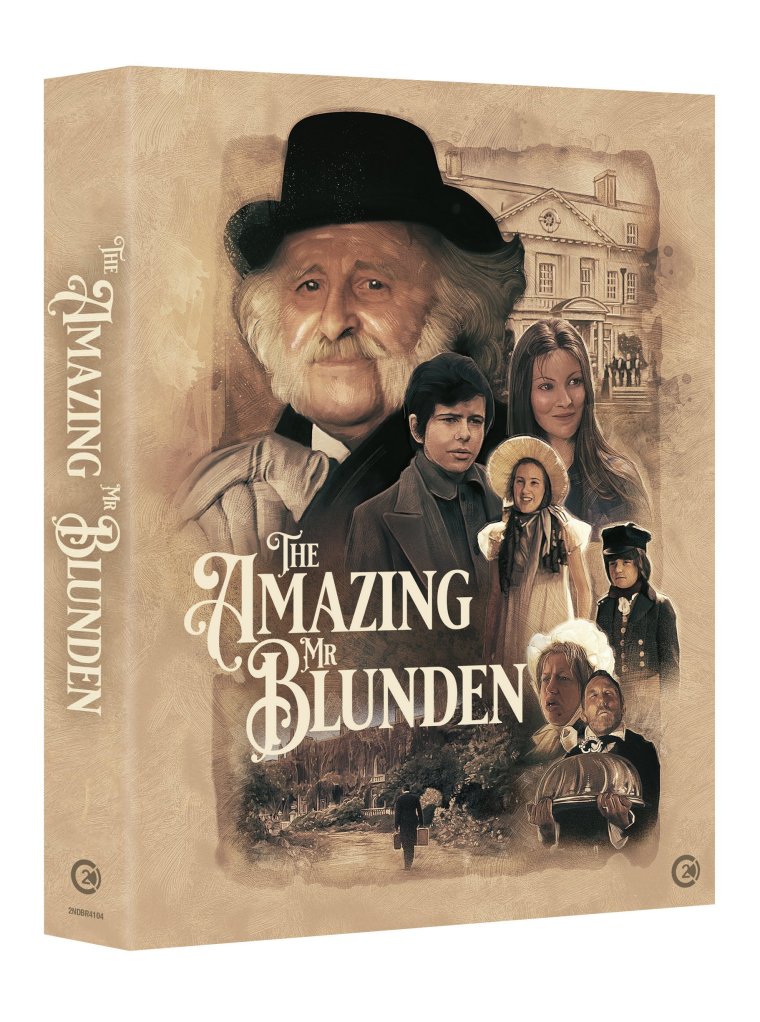The Amazing Mr Blunden: Interview: Rosalyn Landor
In the 1972 family fantasy movie The Amazing Mr Blunden, Rosalyn Landor played Sara, one of the ghosts who haunt the Hall where she and her brother died. Adapted and […]
In the 1972 family fantasy movie The Amazing Mr Blunden, Rosalyn Landor played Sara, one of the ghosts who haunt the Hall where she and her brother died. Adapted and […]
 In the 1972 family fantasy movie The Amazing Mr Blunden, Rosalyn Landor played Sara, one of the ghosts who haunt the Hall where she and her brother died. Adapted and directed by Lionel Jeffries, it was based on the novel The Ghosts by Antonia Barber, and was seen as a follow-up to Jeffries’ big success with The Railway Children. Beloved by those who saw it at the time, it has never received the attention it deserved, although hopefully the new Blu-ray release will bring it to a fresh audience.
In the 1972 family fantasy movie The Amazing Mr Blunden, Rosalyn Landor played Sara, one of the ghosts who haunt the Hall where she and her brother died. Adapted and directed by Lionel Jeffries, it was based on the novel The Ghosts by Antonia Barber, and was seen as a follow-up to Jeffries’ big success with The Railway Children. Beloved by those who saw it at the time, it has never received the attention it deserved, although hopefully the new Blu-ray release will bring it to a fresh audience. To mark the DVD release a few years ago, Landor, who went on to appear in Rumpole of the Bailey and Star Trek: The Next Generation, is now a well-regarded narrator of audiobooks, and chatted with Paul Simpson from her home in Los Angeles…
To mark the DVD release a few years ago, Landor, who went on to appear in Rumpole of the Bailey and Star Trek: The Next Generation, is now a well-regarded narrator of audiobooks, and chatted with Paul Simpson from her home in Los Angeles…a
How did you become involved with The Amazing Mr Blunden?
My father was a theatrical agent and had his own agency at that time with young actresses on his books. Because I was a juvenile performer, my parents felt it was better that he handled my career, when it was very clear that that was what I wanted to do.
He received a call from the casting director for The Amazing Mr Blunden saying they were very interested in seeing me. I had already been in a couple of film and television roles in the UK: as a child actress, I was already known and seen for that sort of type of very quintessentially English children’s role. Any time there was anything there were five of us in that age range, sort of early teens including Fiona Fullerton and myself who were all at the auditions with our mothers. It was the luck of the draw who got the role. Fiona got Run Wild, Run Free, and I was seen for that; Alice in Wonderland, the musical, Fiona got but I was also up for it, but couldn’t do it because I was too young – she was already 15 and didn’t have to have the same amount of schooling. Whichever one of the five of us walked through the door, and made an impression, that was it.
I did for this: Lionel Jeffries thought that I was perfect. In fact, if I recall, he was the very first person I saw after the casting director. I didn’t have to read for her; I read for Lionel straightaway. He made a decision very quickly – within 24 hours, I think. He didn’t hang around.
I want to say seven-eight weeks. I think we filmed it late spring to early summer because I remember it being very cold and windy on the day when we filmed the funeral scene, when I’m coming out with the veil. I know I had to have schooling, because we would have been in school. They needed editing time and dubbing time for a Christmas release, so spring into summer of that year.
Were any of the interiors shot on location?
Not that I recall; everything that I worked on, including the scenes in the stables where we’re nearly discovered with Tom, was all shot in the studio. The stuff in the garden was at Pinewood; the church was a location. The scene where I come out to see the hearse drawn by horses, was the back of the studio building; those steps you can’t see any more, because they’ve built an additional room there for one of the Bond films, I believe.
Had you worked with any of the other children?
Lynne Frederick was already 17 and driving her own little MG sports car, and had already completed The Six Wives of Henry VIII before filming Blunden. While we were filming that, the Six Wives premiered, and I remember her getting dressed up for the premiere. She had worked in the morning and came round and kissed us all goodbye; she was very excited because she was going on to this premiere, which she considered was going to be her big break. It turned out she made more of an impact in Blunden than Six Wives.
 Did the five of you spend time as a group?
Did the five of you spend time as a group?
Not really, because Garry [Miller], myself and Marc [Granger] had to do homework in a room that was set aside from our dressing room. We all worked together. There was a designated schoolroom at Pinewood Studios for minors, so when we weren’t on set or having lunch, we had to be there doing school work that was assigned by our individual schools. Stuart [Lock] and Lynne were already over age so didn’t have to be in a school room, but the rules of employment for minors at that period were that if you were a certain age, you had to be schooled. Our teacher was Mr Major who I had worked with on a film version of Jane Eyre when I was ten.
How much interaction did you have with Diana Dors [who played the cruel cook, Mrs Wickens]?
We tended to get called to make up early in the morning because we were kids and we could get up. The children’s stuff tended to be done in the early morning into the afternoon. The days when the Wickens’ pieces were done were mostly a little later; I imagine Diana had the leisure to come in a little later.
The only time I got to really see her was in the make-up caravan; she was always very warm, and gave me a big hug. She wasn’t into, ‘I’m a nasty character in this so I’m going to remain nasty to you off set as well’. She had kids of her own and was effusively welcoming. She loved us working with her.
 She relished having the role after all this sex kitten personality she’d had all her life. To move into character roles at her time of life was something she dearly wanted to do, and if she had lived, I’m sure she’d have been in all these Dickens BBC dramas. I can’t imagine they wouldn’t have snapped her up to be in the costume dramas. I really do miss her; people saw her very much as one particular sort of actor and that’s all they saw in her. Those particular sort of women tend to be very good at growing into their age. She was still beautiful: I saw her without make up.
She relished having the role after all this sex kitten personality she’d had all her life. To move into character roles at her time of life was something she dearly wanted to do, and if she had lived, I’m sure she’d have been in all these Dickens BBC dramas. I can’t imagine they wouldn’t have snapped her up to be in the costume dramas. I really do miss her; people saw her very much as one particular sort of actor and that’s all they saw in her. Those particular sort of women tend to be very good at growing into their age. She was still beautiful: I saw her without make up.
What’s your overriding memory of working on the film?
The fire for the denouement of the story was huge because that took a few days to complete from where a viewer sees it, through to the fire being put out. I remember watching Gary and [Laurence] Naismith [as Mr Blunden] doing the scene where Blunden puts his cloak around Jamie and walks through the fire. I was on set the day they filmed that.
I was astonished at how scary it looked when we saw it in the finished production compared to seeing it filmed. They did a lot in post-editing. The special effects we have today we didn’t have then, so there really were long pipes on the floor with flames coming out of them, with the fire brigade standing by, and it was real fire on set with men on blankets standing by. They walked between flames although it looked as though they were walking through them.
The farewell sequence often causes laughter…
It was Lionel’s idea to have everybody say goodbye, which is what they did on The Railway Children. It was very quietly done then. But he told me what to say (“Come again”) and we were all laughing when we did it, but we did it.
Graham Crowden’s is the funniest…
I’m sure Graham made that up himself!
 What do you think of it as a film?
What do you think of it as a film?
I’m quite surprised at the interest that’s been generated as a re-release because I think it was a largely forgotten film. It didn’t have the cachet of The Railway Children, partly because E. Nesbit was such a beloved author during the 1950s-1970s. She was an Edwardian writer who had written all these amazing books for children and The Railway Children was the quintessential book to adapt of her work. With Lionel in charge of it, it became magic. All of the people who had grown up with her books took their children to see The Railway Children.
I think The Amazing Mr Blunden didn’t have that cachet because Antonia Barber was not E. Nesbit. She had written this book, and Lionel had found it – I don’t know the genesis of that – but I know that he felt that it was a wonderful story. He had wanted to do a ghost story for children for a long time, and felt that this was the perfect story to adapt and make into the film. But she wasn’t Edith Nesbit.
I don’t know what the competition was that Christmas, but ours was the film people went to see – but it didn’t have the lasting presence. Lynne didn’t have the sort of Hollywood career that Jenny Agutter went on to have, so when people looked at Jenny as a grown up, they could then go back and see her as a Railway Child. Sally Thomsett and Bernard Cribbins were also very visible; but from Blunden, Diana Dors didn’t really do anything else after it, and nobody else had a presence.
Did you keep in touch with any of the rest of the cast?
No. There was no internet in those days, and phoning wasn’t someone that people of our age did. We didn’t go to the same school or live in the same area. Lynne was living her adult life in London, and I don’t recall speaking to her again except at the premiere, when we were all together with the Railway Children, who came to that premiere as well!
Click here to order The Amazing Mr Blunden from Amazon.co.uk
 Thanks to Simone Bramble at AIM Publicity for her help setting up this interview and Arielle Rudman for the photo of Rosalyn Landor today
Thanks to Simone Bramble at AIM Publicity for her help setting up this interview and Arielle Rudman for the photo of Rosalyn Landor today
This was my favourite film as a child. I still revisit it from time to time the characters were all amazing.the soundtrack for the movie was just fantastic. All I can say is this movie made me both sad and happy. In my opinion it is more enjoyable than The Railway Children. It should have had more awards for its excellence.